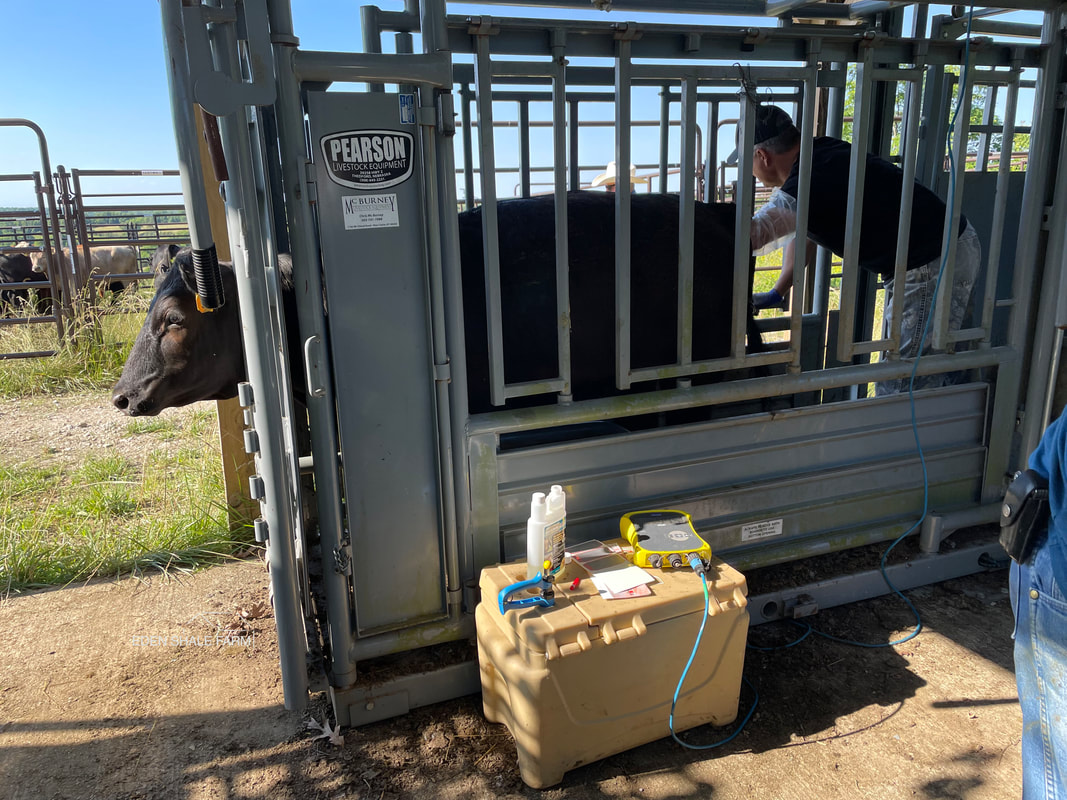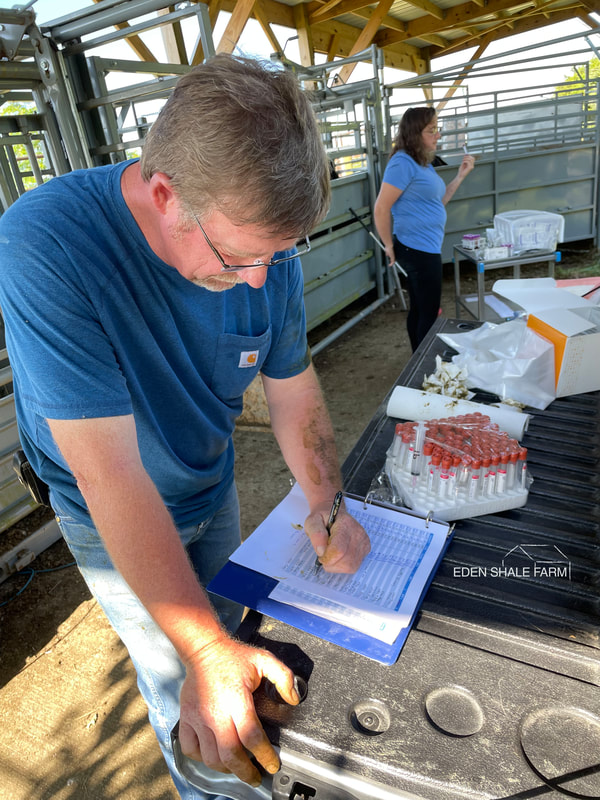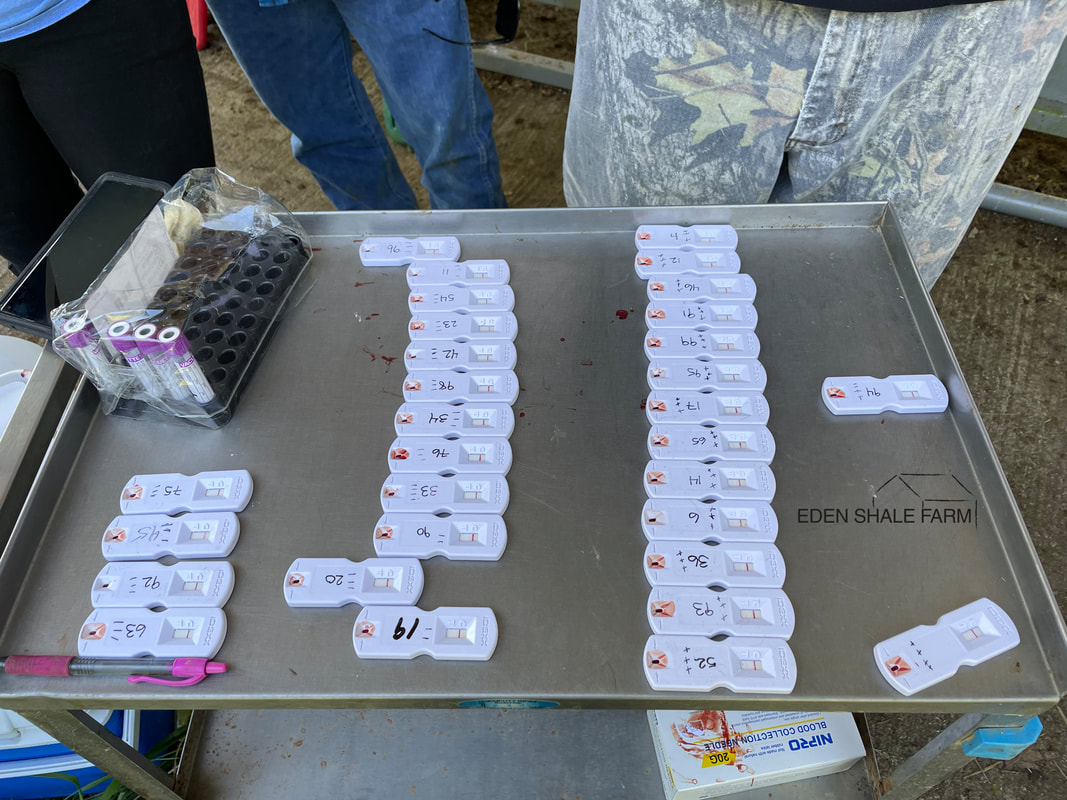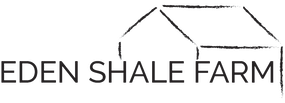|
Unlike most years, this year during the month of June we continued our work with the heifers in the paddocks. As you recall, these 32 heifers are part of a two year trial that is taking place in partnership with USDA and UK College of Agriculture, Food and Environment. We are working with Brittany Harlow (USDA-ARS) and Dr. Les Anderson (UK Animal Science) to manage the project.
The purpose of this trial is to determine if pulverized clover, fed in free choice mineral, can have a positive impact on the heat stress in cattle due to toxic fescue. This study will take into consideration heat stress of the animals, hair coat and body condition scores, pregnancy rates, and average daily gains. The heifers have also been tagged with Cow Manager ear tags which will collect data about the animals, such as how much time is spent grazing, herd activity, and body temperature. Readers have been placed on the shade structures which capture the data when the heifers get within 110 feet, then shoot it to a laptop receiver which is located in an upstairs window of the farm house facing the paddocks. Not only does this collect tons of data, but Harrlow and Dr. Anderson can watch the data in real time on their smart phones. I don’t fully understand it, but I can assure you it is a powerful tool for accurate data collection. Per usual, the heifers were synchronized and exposed to one round of AI. The heifers were bred AI on May 21st. For this first breeding, the heifers were bred using sexed semen and we bred for all heifers. Then 19 days later Dr. Anderson pregnancy checked the heifers and anything that was open received another CIDR to be resynchronized for a second round of AI service. For the first round of AI we had a pregnancy rate of 53% using the sexed semen. The second round of AI took place on June 18th, and we used the heifer sexed semen on the second breeding as well. Assuming we get 50% of these heifers bred with this second AI service, the bull should only have to clean up about 6-7 heifers. Every trip through the chute the heifers get weighted, body condition scored, hair coat scored, blood sample collected, and ultra sounded for blood vessel dilation (effects of toxic fescue). After pre-breeding shots and two rounds of AI synchronization and breeding, these heifers have been through the chute more times at 18 months old than most cows will do in a lifetime. Brittan Harlow and Tracy Hamilton (USDA-ARS) are also measuring mineral intake every week, and conducting vegetation counts in all the paddocks for each group of heifers. There are two control groups that are not on the clover mineral and two treatment groups that are on the clover mineral. The heifers will be pregnancy checked at the end of the breeding season to determine conception rates, and all the data will be analysis to determine if the clover had an effect on reducing heat stress in the animals. This study will also be repeated next year to collect more repetition of the data. I will give updates in future articles as to the findings of this years work. In the mean time, you can follow along at www.edenshalefarm.com Comments are closed.
|
Archives
June 2024
Categories
All
Welcome |
CONTACT US |
EMAIL SIGN UP |
|
Eden Shale Farm
245 Eden Shale Rd. Office: (859) 278-0899 Owenton, KY 40359 Fax: (859) 260-2060 © 2021 Kentucky Beef Network, LLC.. All rights reserved.
|
Receive our blog updates
|




 RSS Feed
RSS Feed
